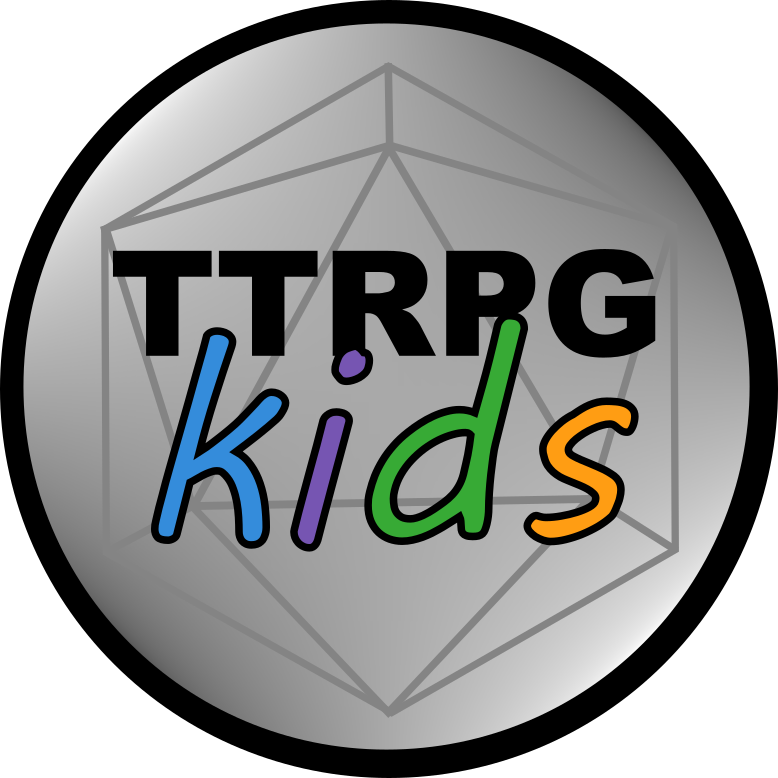Tips and Tricks: Improving Skills Practice and Recognition Through the Veil of TTRPGs
I originally started playing tabletop RPGs with my kid when they were about 2.5 years old, and I found that they were an excellent tool to help us talk about different hard topics like eating veggies, how to take deep breaths when upset, and what to do when you’re worried about something new.
The games we played then had little to no mechanics and followed a Choose-Your-Own-Adventure style format with lots of challenges like stacking blocks or counting the number of dots on the die that we rolled in order to pass a check. They were very focused on the story and asking questions and letting my kid choose where things went, however, I did add some structure or challenges to help us tie into real-life social-emotional learning.
I would have my kid find an NPC in need of some help or would present a challenge where they needed to coax a shy dragon out of a hiding spot to find their parents. It gave a forum for us to talk about why the dragon was nervous and what they could do to calm down, and it REALLY helped us. Talking through our characters allowed us to cover subjects that I sometimes had a hard time explaining clearly to my kid in terms they could understand, and it allowed my kid to act out using the skills we talked about during a low pressure time. My kid got practice using these skills before they were actually needed in real life (which was really important when interaction with other kids was severely reduced during COVID shut down).
Shortly after starting TTRPGs with my kid and then starting the TTRPGkids website, a pre-K teacher reached out to me and asked if I would help make a TTRPG based on their SEL (social-emotional learning) curriculum for their class – I was SUPER excited and dove into turning their list of SEL topics into a series of adventures about a dragon who was nervous to fly and needed to practice positive self-talk, an astronaut who regularly met new individuals from other plants and was learning to communicate with them, a detective mouse who went around solving problems for other animals by encouraging them to talk it out, and more. These games helped kids practice skills that they were struggling with to actually see them played out and be able to participate in the decision-making and conversations that were part of the role-playing in the game.
When I went back to teaching college engineering, I took this knowledge with me as well and was able to help my adult students using these same concepts.
My teaching position was as an adjunct professor teaching a freshman engineering class that was very focused on hands-on projects, learning to communicate your work to other engineers, and gaining confidence with skills used in real world engineering. The class already had several assignments framed with a story to help show applicability to the real world, and that got me thinking… why not link those stories together? Why not use the same methods that I had with my kid and the pre-K class to not only show applicability to the real world but then to ALSO get students invested with a character? Why not have them work through the veil of a fictional character to more easily connect to the material?
So, I set my class up with a class engineer that they created together one semester and then later shifted it to each student making their own class engineer in the next semester. Students chose what they looked like, what their goals were, and what they were interested in. I framed each lesson as a step in this engineer’s journey, and I had students take notes at the end of class about what their engineer learned from today’s lesson for their career as an engineer or their life as an adult instead of what the student themself learned (as was done in previous semesters), and the improvement was astounding!
By viewing it through this fictional character, students more thoroughly were able to explain how different lessons would impact the engineer, helped them learn key skills, or would benefit them later in life. They scored better on the end of year surveys and were able to give clear and thorough examples of concepts like networking (along with why it was important) because we had practiced it with our characters . That veil of the character allowed a degree of separation to where they were more comfortable talking about this fictional character than themselves and were thereby able to more actively engage with the material. Even though they were writing about this other character, they were really conducting a self reflection… it just didn’t feel that way.
From pre-K to college to for-fun games that I play myself, using a character as a veil can allow students and players to feel more comfortable exploring and reflecting on tough topics and big feelings. Whether it’s addressing how to share, why it’s important to run through the first few steps that everyone forgets from the engineering design process, or contemplating your own personal weakness and how to face them, role-playing through a character gives us practice with these topics in a way that’s just slightly less intimidating enough that we can approach them. We learn and gain experience with our character and then are able to use that as a push for us to tackle these skills in real life.
If you liked this post, make sure to subscribe to the TTRPGkids monthly newsletter to stay up to date on the latest reviews, tips and tricks, game and podcast list updates, and more! Thank you for playing tabletop RPGs with your kids and sharing this awesome hobby with the next generation!


